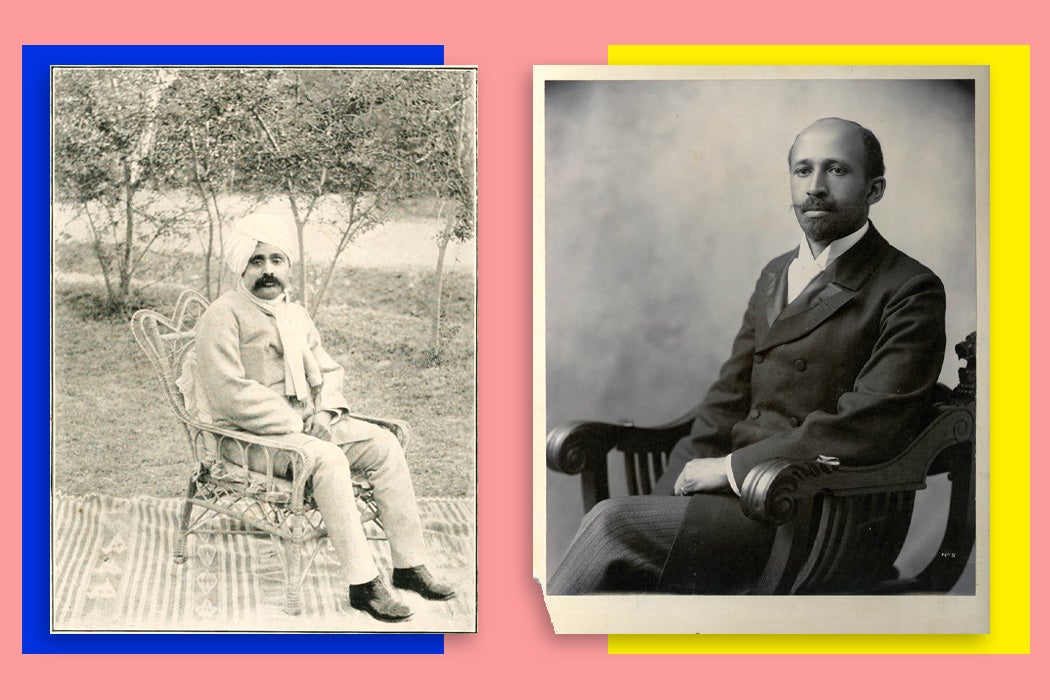Martin Luther King Jr. was famously influenced by Mahatma Gandhi’s nonviolent resistance to British rule. But, as public policy scholar Andrea M. Slater writes, connections between the Black American and Indian liberation movements go back much farther. She focuses specifically on the writing and activism of W. E. B. Du Bois.
At the Pan-African Congress in London in 1900, Du Bois identified “the color line” as the central problem of the new century. For him, this implied the need for alliances not just across the African diaspora but also with others resisting racist and colonial oppression, including the people of India.
Intellectual interest in this confluence also ran the other way. When Indian scholar and activist Lajpat Rai was exiled from his own country during World War I, he traveled to the United States. He initially planned to focus on explaining the oppression of India to Americans. But, in working with friends including Du Bois, he began studying conditions facing Black Americans and writing about the hypocrisy of a US government that claimed to fight for freedom abroad while maintaining systems of segregation and disenfranchisement at home.
“Rai noted that the Negro, although now emancipated, was still not considered a citizen of the United States and was the first to suggest the sociological similarities between the caste system and US race relations,” Slater writes.
Indians and Black Americans faced many parallel experiences as frequently exploited laborers in industrializing economies and as fighters recruited to support white-led nations in the two world wars. They were also depicted in similar ways by their respective oppressors: as uncivilized, genetically inferior people who should be governed by white leaders for their own sake.
Along with intellectual exchanges like those between Du Bois and Rai, Black Americans and Indians offered each other material and political support. For example, Harlem residents organized clothing drives and fundraisers for Indian groups. The Council on African Affairs (CAA), originally formed to mobilize Black Americans in backing African freedom struggles, played a big role in this work. In 1942, the CAA, chaired by Paul Robeson with Du Bois as vice-chair, joined with Black labor unions to organize a rally in Harlem for Indian freedom. More than 4,000 people, most of them Black, took part.
Weekly Newsletter
Three years later, the International Congress of Colored People brought delegates from around the world to San Francisco, where they took part in what Slater calls an “activist boot camp,” creating writings in support of anti-racist struggles. Vijaya Nehru Pandit, head of the Indian delegation, was particularly successful in forming international alliances and winning coverage in Black newspapers and other American media.
In 1946, when the colonial government in India limited access to paper in the hopes of limiting the printing of pro-independence pamphlets, Mahatma Gandhi’s son Devdas traveled to the US, where the Black press helped provide him with newsprint.
“Through alignment with India’s movement, American Blacks recognized themselves as part of a larger global struggle,” Slater writes.







